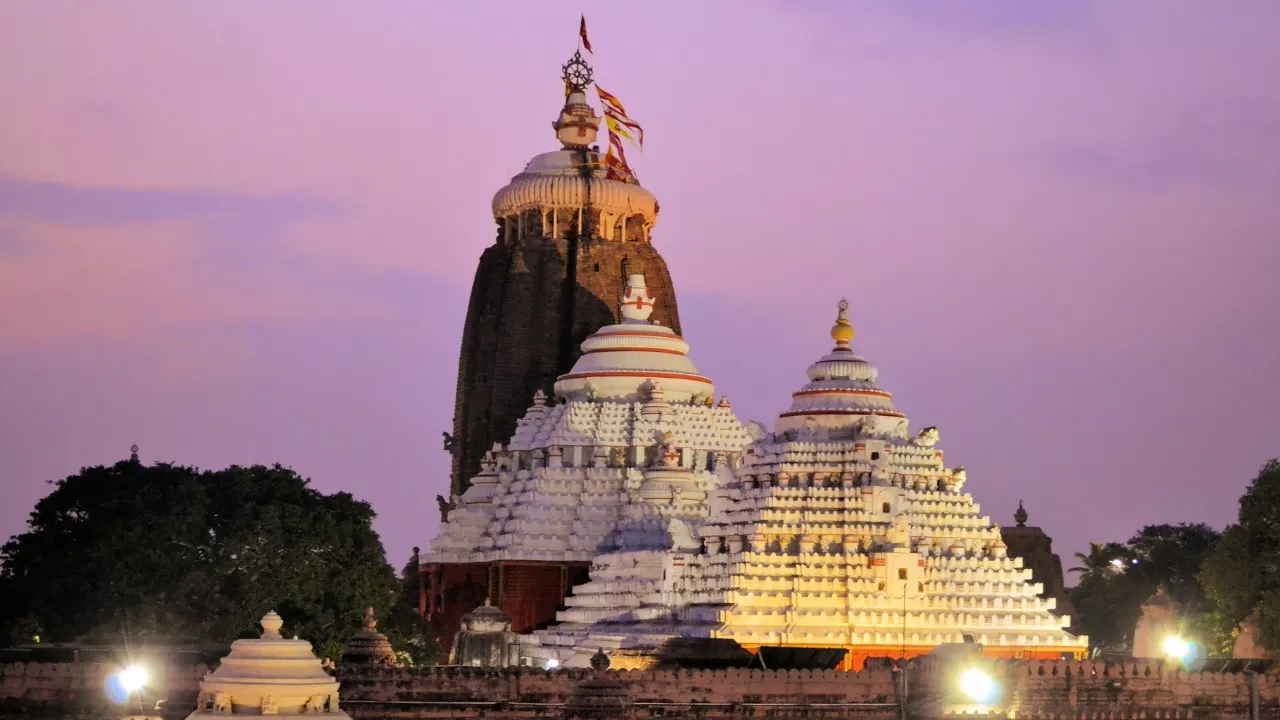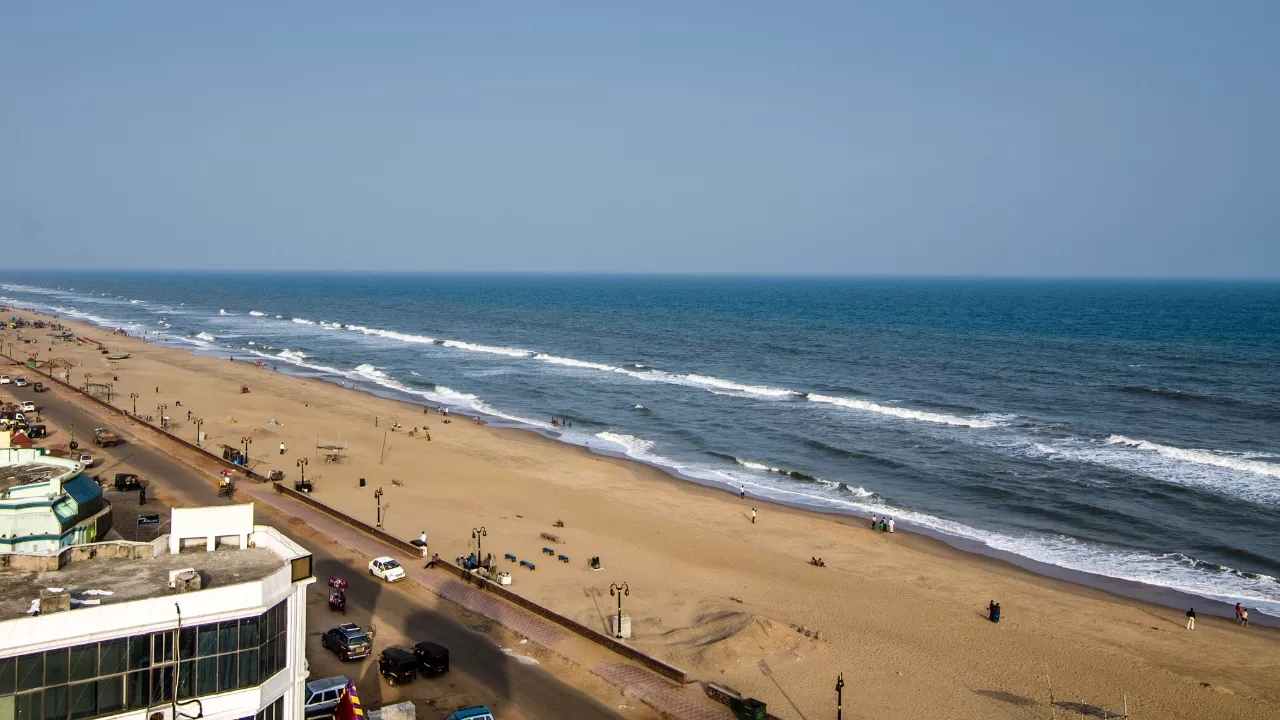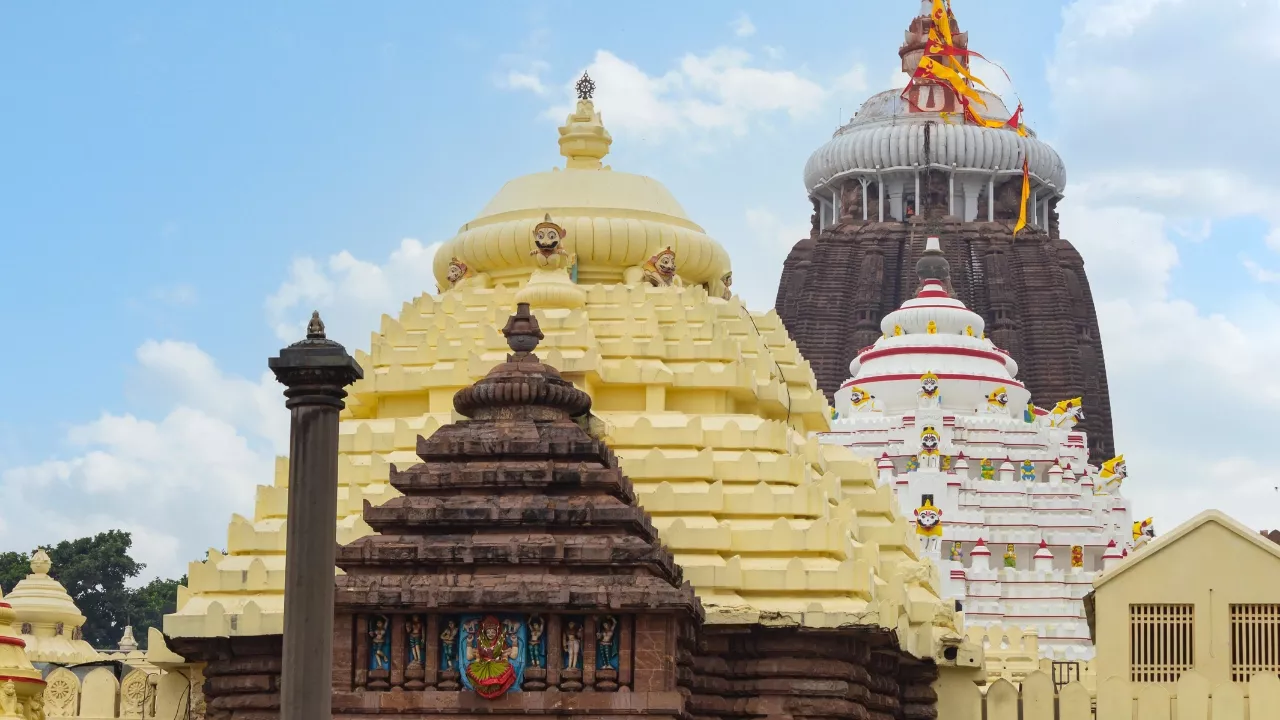Jai Jagannath!
The Sacred Essence of Puri: The Abode of Purushottama- Jagannath Puri Shradh
To truly grasp the power of a Jagannath Puri Shradh, we must first immerse our souls in the sanctity of the place itself. Puri, known in our sacred Puranas as Purushottama Kshetra, is not merely a coastal city; it is the earthly abode of Lord Jagannath, who is none other than Lord Vishnu/Krishna himself, the Supreme Person (Purushottama).

A Land Where the Lord Resides in Living Form
Unlike in many other temples where the deity is a symbolic representation, it is a deeply held belief that Lord Jagannath resides in Puri in a living, vibrant form. He is a king who gives daily darshan to his devotees, who falls sick, and who travels on his magnificent chariot. The entire city is his kingdom, and the ocean is his eternal companion. The scriptures tell us that the Lord himself chose this spot on the “southern seashore,” making it a place of direct and accessible divine presence. This is not just a place associated with God; it is a place where God lives.
The King of Holy Waters: The Sacred Ocean
The ocean that washes the shores of Puri is not just a body of water; it is revered as the Tirtharaja, the King of Holy Waters. Our scriptures see the sea as the abode of Lord Narayana, who rests upon its waves. The waters themselves are called Naras, the dwelling place of Narayana.
Therefore, performing a ritual at Puri is to do so at a unique and powerful confluence:
- The sanctity of the sacred land (Kshetra), the abode of Lord Jagannatt.
- The purifying power of the sacred water (Tirtha), the holy ocean itself.
This combination makes every spiritual act performed here exceptionally potent.
The Ultimate Synergy: Shraddha by the Holy Ocean Waves

When this sacred duty of Shraddha is performed on the shores of Puri, in the presence of Lord Jagannath, a spiritual synergy of immense power is created.
The Liberating Power of the Ocean
Our Puranas sing the glories of performing ancestral rites by the sea. A holy dip in the ocean is said to destroy the sins of a hundred thousand births. The ancestors themselves eagerly desire that their descendants offer oblations in these sacred waters. A Shraddha performed by the sea is said to provide “everlasting satisfaction” to the Pitrs, redeeming numerous generations, even those who may be suffering in hell. The merit of bathing in the sea at Puri is said to grant the benefit of bathing in all other Tirthas combined.
An Offering at the Feet of the Lord of the Universe
The ultimate goal of Shraddha is to help our ancestors find peace and attain liberation (Moksha). When you perform Pind Daan in Puri, you are not just making an offering to your ancestors; you are placing them under the direct, compassionate gaze of Lord Jagannath, the Lord of the Universe. You are surrendering their fate into his loving hands.
The scriptures make a profound promise about Puri. It is said that anyone who dies at Purushottama Kshetra is freed from the cycle of rebirth. The spiritual power of the place is so immense that even a worm is said to attain a four-armed form, the form of Vishnu’s attendants in Vaikuntha. Imagine, then, the benefit that accrues when a devout child performs the sacred rites for their beloved ancestors in such a place!
A Pilgrim’s Guide: Performing the Sacred Rites in Puri

The performance of a Jagannath Puri Shradh is a deeply moving experience, integrating the power of the ocean with the grace of the temple. The rituals are traditionally guided by the local priests, known as Pandas.
The Sacred Dip: Purification in the Mahodadhi
The ocean at Puri is known as the Mahodadhi. The ritual begins with a Sankalpa (sacred vow) on its shores, followed by a purificatory bath in the holy waves. As you bathe, it is traditional to chant mantras invoking the Lord of the Waters: “Om, obeisance to you, the Lord of waters, in the form of Viṣṇu. O Lord of Devas, be present in the briny ocean.” This act cleanses you of your sins and prepares you to be a pure vessel for the ancestral rites.
Tarpan and Pind Daan on the Seashore
It is on the golden sands of the Puri beach, with the eternal sound of the ocean waves as your mantra, that the Shraddha is performed.
- Tarpan (Water Oblations): Facing the south, you will offer the holy water of the ocean, mixed with black sesame seeds, to your ancestors. As the water from your hands returns to the ocean, it is a powerful symbol of your ancestors merging with the infinite, with the very body of Narayana.
- Pind Daan: The Pindas (rice balls) are offered to the three preceding generations. You place these offerings on the sacred sand, a direct offering to the earth in the presence of the vast ocean. After the prayers, the Pindas are respectfully immersed in the holy ocean waves. As the waves carry the Pinda away, it is a visual enactment of your ancestors being carried on their final journey towards liberation.
Honoring the Lord: The Temple Rituals
After the rites on the seashore, the pilgrimage continues inside the great Jagannath Temple.
- Mahaprasad: A crucial part of the Shraddha here is to offer Mahaprasad—the sacred food that has first been offered to Lord Jagannath—in the name of your ancestors. This is considered the ultimate spiritual nourishment, a direct blessing from the Lord himself.
- Darshan of the Holy Trinity: The pilgrimage culminates with the darshan of Lord Jagannath, his brother Balabhadra, and his sister Subhadra. This final act is one of surrender, placing the fruits of all your rituals at the feet of the Lord, seeking his final blessing for the liberation of your ancestors.
A Final Counsel: The Call of the Southern Seashore
The sanctity of a Jagannath Puri Shradh is unique and profound. It combines the purifying power of the Tirtharaja (the ocean) with the liberating grace of the Kshetaraja (the holy abode of the Lord).
When to Go?
While Puri is eternally auspicious, Pitrupaksha is, of course, a prime time for these rites. Other powerful times include any Amavasya (new moon), Purnima (full moon), or during a solar or lunar eclipse.
When Travel is Not Possible
If a physical journey to this sacred seashore is not possible, do not feel that this blessing is beyond your reach. You can perform the Shraddha at home. During your Sankalpa, close your eyes and with deep devotion, mentally transport yourself to the beach at Puri. Hear the sound of the waves, feel the presence of Lord Jagannath. Make your offerings with the strong bhava (feeling) that you are there. The Lord of the Universe, who resides in all hearts, will surely receive your mental offering. Furthermore, in our modern times, reputable organizations like pitrupaksha.org can facilitate the performance of these sacred rites at Jagannath Puri on your behalf, ensuring that the blessings of this holy Tirtha can reach your ancestors, no matter where you are.
Conclusion: A Shraddha of Divine Compassion
To perform Shraddha in Puri is to place your ancestors in the direct care of the Lord of the Universe. It is an act of deep faith in his boundless compassion. You are not just following a ritual; you are participating in the divine lila of the Lord, seeking his grace for the most important people in your lineage.
It is a rite that promises not just peace, but a place in the eternal abode of Vishnu. May the great Lord Jagannath, his compassionate eyes ever-open, bless your noble intentions and grant the highest liberation to your revered ancestors.
Jai Jagannath!
